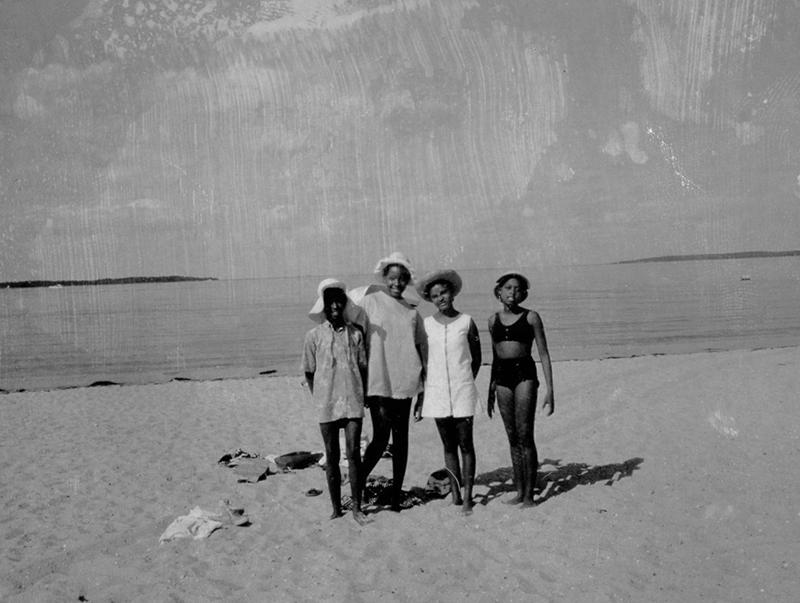
When Sag Harbor expanded the boundaries of its historic district 25 years ago, the three largely African-American neighborhoods that flank one another on the east side of the village, and were largely developed in the post-war years, were excluded.
How times have changed.
In 2019, the neighborhoods, which go by the acronym SANS for Sag Harbor Hills, Azurest and Ninevah, were named first to the New York State Register of Historic Places and then to the National Register of Historic Places, capping a four-year campaign to have them recognized for their historic and cultural significance.
The icing on the cake came in December, when the steering committee that oversaw the effort to gain that recognition was honored itself with the Excellence in Historic Preservation Organizational Achievement award from the New York State Office of Parks, Recreation and Historic Preservation.
“It’s an award that gives us great pride,” said Renee Simons, one of the leaders of the effort. “In Preservation Land, it’s like winning the Academy Award. What was really special was the fact that we received the highest rating of all the nominees.”
The steering committee, made up of residents of the neighborhoods as well as historic consultants who worked on the project, found itself in heady company.
Among the other award winners were The TWA Hotel at Kennedy Airport in New York, which was honored for Excellence in Historic Building Rehabilitation; the Colored Musicians Club in Buffalo, which was honored for Excellence in Historic Documentation; and the Village of Wyoming Gas Light Restoration, which was honored for Excellence in Historic Preservation and Environmental Consultation.
“Community volunteers worked for nearly four years to get the 2019 listing of the Sag Harbor Hills, Azurest, and Ninevah Subdivisions Historic District on the National Register of Historic Places,” the award citation stated. “The area is historically significant as a summer community created by and for African-American professionals and their families.”
Daniel McEneny, the community engagement coordinator for the state office of historic preservation, said the SANS effort, “scored exceptionally well,” and the committee was “specifically recognized for the achievement in working together.”
He added that besides the 10 award winners, another dozen sites were placed on the state Register of Historic Places from among 100 nominations.
When Sag Harbor last expanded its historic district in 1994, the SANS neighborhoods were left out because the houses were less than 50 years old and did not fit the model for what was considered historic in a colonial-era village. Nonetheless, those overseeing the expansion noted the area’s significance as an early resort community for African-Americans.
[caption id="attachment_99325" align="alignnone" width="800"] Girls on the beach in the SANS area circa, 1969.[/caption]
Girls on the beach in the SANS area circa, 1969.[/caption]
The three SANS neighborhoods were developed in the late 1940s and early 1950s by African-Americans who were otherwise shut out of other resort committees and unable to obtain traditional mortgages despite being business owners, doctors, lawyers, or other professionals. The neighborhoods were among more than 100 similar communities that sprang up during the era of Jim Crow law that reinforced the widespread racial discrimination of the time.
“It is an American story, it really speaks to all of us,” said Ms. Simons, “about how people can persist, prevail, move on and rise above.”
Through the years, the neighborhoods became a tight-knit community, where families and friends gathered every summer, with many inhabitants moving to their homes in Sag Harbor full time when they retired.
Five years ago, residents of the neighborhoods banded together to demand that the village take a tougher stand against the owners of a handful of houses that had been allowed to deteriorate. Not long afterward, as the housing market recovered from the deep recession of 2008, speculators began to buy up old houses and vacant lots in the neighborhoods, sparking concern that they would be transformed from family-friendly enclaves to just more second home developments.
In the wake of that renewed development pressure, neighbors launched the effort to have their neighborhoods recognized for their historic and cultural significance.
Today, Ms. Simons said she believes residents are no longer taking their neighborhoods for granted. The prestige of being recognized by the state and federal government “has awakened a sleeping pride,” she said that has longtime residents renovating their homes and taking steps to keep them in their families.